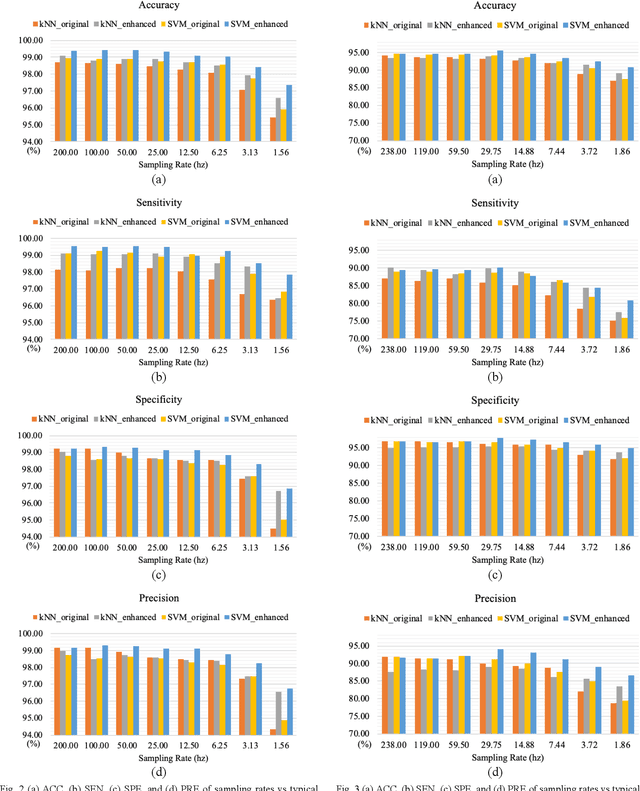Deep Learning Based Signal Enhancement of Low-Resolution Accelerometer for Fall Detection Systems
Paper and Code
Dec 07, 2020



In the last two decades, fall detection (FD) systems have been developed as a popular assistive technology. Such systems automatically detect critical fall events and immediately alert medical professionals or caregivers. To support long-term FD services, various power-saving strategies have been implemented. Among them, a reduced sampling rate is a common approach for an energy-efficient system in the real-world. However, the performance of FD systems is diminished owing to low-resolution (LR) accelerometer signals. To improve the detection accuracy with LR accelerometer signals, several technical challenges must be considered, including misalignment, mismatch of effective features, and the degradation effects. In this work, a deep-learning-based accelerometer signal enhancement (ASE) model is proposed to improve the detection performance of LR-FD systems. This proposed model reconstructs high-resolution (HR) signals from the LR signals by learning the relationship between the LR and HR signals. The results show that the FD system using support vector machine and the proposed ASE model at an extremely low sampling rate (sampling rate < 2 Hz) achieved 97.34% and 90.52% accuracies in the SisFall and FallAllD datasets, respectively, while those without ASE models only achieved 95.92% and 87.47% accuracies in the SisFall and FallAllD datasets, respectively. This study demonstrates that the ASE model helps the FD systems tackle the technical challenges of LR signals and achieve better detection performance.
 Add to Chrome
Add to Chrome Add to Firefox
Add to Firefox Add to Edge
Add to Edge